Art
Advertising
- Advertising
- Tin (Cassiterite) Distribution: Mediterranean Bronze Age
- Archaeological Sites of the Aegean Minoans
- Extent of Santorini Eruption's Tsunami Inundation of Minoan Crete
- End of Minoan Linear A Writing and LM IB Fire Destruction of Crete
-
The Cause of the End of the Bronze Age
with the Scientific Method -
Nature Geoscience Journal and
Late Minoan IB Destruction Event - Prehistoric Star Navigation, Eastern Mediterranean Ethnocentric Bias, and the "Cabal of Certainty"
- Theoretical Bronze Age Minoan Heliographic Aegean Network Validated by 92.15 Mile (148.3 Km) Mirror Sunlight Flashes
- The Validation of a Bronze Age Minoan Heliographic Aegean Network in Southern California
- Tsunami Generation from the Titanic Bronze Age Minoan Eruption of the Santorini Marine Volcano
- The Cento Camerelle Mines of Tuscany: A Major Bronze Age Source of Tin
- No Men or Sails Required: Successful Prehistoric Sea Travel
- Minoan Downfall and Volcanology's Black Hole of Unknowns
- Homer and Navigating by the Stars in Prehistory
- Primacy of Human Powered Rowing in Copper Age and Minoan Shipping
- Minoan Invention of the True Dome and Arch Prehistoric Mediterranean Catenary Architecture
- "Sinking Atlantis" Tsunami Myth Debunked
- Minoan Tholos Structural Mechanics and the Garlo Well Temple
- Minoan Web of Mirrors and Scripts
- Santorini Eruption and LM IB Destruction
- Minoan Catastrophe: Pyroclastic Surge Theory
- Early Minoan Colonization of Spain
- Origin of the Sea Peoples
- Minoan Ship Construction
- Minoan Maritime Navigation
- Ringed Islands of Thera, Santorini, Greece
- Minoan Scientific Tradition
GIS Google Earth
Publications
Publications
Official Art Gallery
A Collection of 20 Paintings each with over 70 Art Products
There came a time when I decided to build a Google Earth GIS dataset of the archaeological sites listed in John G. Younger's excellent publications:
The Cretan Hieroglyphic Texts
Linear A Texts in phonetic transcription

Minoan Linear A Tablets
Late Bronze Age (LBA)
Late Minoan I Period
My original intention was to simply provide a sound educational GIS publication for those interested in the temporal geographical distribution of the archaeological sites associated with the excavated finds of Minoan Hieroglyphics, Linear A, Trojan Script, and Mycenaean Linear B from the Bronze Age Aegean. When I completed this work I was stunned by the realization of just how truly comprehensive and devastating the Late Minoan IB Fire Destruction of Crete was.
Two interesting and relevant papers regarding this topic are:
"The Chronology of the LM I Destruction Horizons in Thera and Crete", J. V. Luce, Thera Foundation, Second International Scientific Congress, Santorini, Greece, August 1978, pp. 785-789.
"Radiocarbon, Calibration, and the Chronology of the Late Minoan IB Phase", Rupert A. Housley, Sturt W. Manning, Gerald Cadogan, Richard E. Jones and Robert E. M. Hedges, 1999.
Science has never been able to adequately explain the Late Minoan IB fire destruction of Crete. It was so overwhelmingly catastrophic that apparently most, or all, of the palaces, towns, and villas in central and eastern Crete were decimated by intensely hot fires. Though damaged Knossos was repaired to a degree and continued to carry on in some reduced fashion. All of the other palaces including Galatas, Gournia, Malia, Phaistos, and Zakros were either destroyed by tsunamis from the Theran eruption or fiercely burned and abandoned forever.
With very few possible exceptions, all of the archaeological finds of Minoan Hieroglyphics and Linear A writing date from about 2200 BC up to the time of the Late Minoan IB destruction event. Only a handful of Linear A finds show up in the period that followed. In the words of John G. Younger, "It is therefore possible that Linear A survived the LM IB destructions, though barely".
Two interesting and relevant papers regarding this topic are:
"The Chronology of the LM I Destruction Horizons in Thera and Crete", J. V. Luce, Thera Foundation, Second International Scientific Congress, Santorini, Greece, August 1978, pp. 785-789.
"Radiocarbon, Calibration, and the Chronology of the Late Minoan IB Phase", Rupert A. Housley, Sturt W. Manning, Gerald Cadogan, Richard E. Jones and Robert E. M. Hedges, 1999.
Science has never been able to adequately explain the Late Minoan IB fire destruction of Crete. It was so overwhelmingly catastrophic that apparently most, or all, of the palaces, towns, and villas in central and eastern Crete were decimated by intensely hot fires. Though damaged Knossos was repaired to a degree and continued to carry on in some reduced fashion. All of the other palaces including Galatas, Gournia, Malia, Phaistos, and Zakros were either destroyed by tsunamis from the Theran eruption or fiercely burned and abandoned forever.
With very few possible exceptions, all of the archaeological finds of Minoan Hieroglyphics and Linear A writing date from about 2200 BC up to the time of the Late Minoan IB destruction event. Only a handful of Linear A finds show up in the period that followed. In the words of John G. Younger, "It is therefore possible that Linear A survived the LM IB destructions, though barely".

Standardized Minoan Linear A Sign Table
Late Bronze Age (LBA)
Late Minoan I Period
This phenomenon can be clearly seen in this GIS dataset. The practice of writing was widely distributed throughout central and eastern Minoan Crete. Writing had been well established among the Minoans for hundreds of years leading up to the destruction. The sharp contrast between the many Linear A archaeological sites on Crete before the destruction and the mere two Linear B sites in the Mycenaean period that followed is incredible. What could possibly have caused the end of writing of an entire people on Minoan Crete and yet be so near the time of the Bronze Age eruption? I would sincerely appreciate any comments that anyone may have.
Instructions
If you already have Google Earth setup on your computer all you need to do is to download the GIS (KMZ) mapping file below but if not you will need to download the free version of Google Earth here:
Download Google Earth - Free!
With Google Earth Pro downloaded, installed, and working properly on your computer you are now ready to download the GIS mapping file:
Download the Bronze Age Aegean Scripts GIS Mapping - Free!
Once downloaded simply open it and Google Earth will automatically start up and display the mapping from a great elevation. You can grab the map and move it anywhere you wish by holding down the left mouse button. There are three controls on the upper right of the screen. The top one is for tilting and rotating. The middle one is for panning and the bottom slider is for zooming in and out. Just position an area of interest in the center of the screen and zoom in to see the map's detail. The latitude, longitude, and elevation of your mouse position is displayed on the bottom of the screen. The numbers shown on the right of some list entries below are elevations in meters.
Minoan Hieroglyphics Archaeological Sites
Crete - Caves
Arkalochori
Crete - Palaces
Archanes
Knossos
Kydonia (Chania)
Malia
Phaistos
Zakros
Knossos
Kydonia (Chania)
Malia
Phaistos
Zakros
Crete - Peak Sanctuaries
Syme 1137
Vrysinas 827
Vrysinas 827
Crete - Sites
Adromili
Avdou
Ayia Triadha
Gortyn
Gouves
Heraklion
Kalo Horio
Kastelli - Pediada
Kritsa
Lastros
Lithines
Mochlos
Myrtos-Pyrgos
Neapoli
Palaikastro
Petras
Pinakiano
Pressos
Sitia
Skhinias
Xida
Ziros
Avdou
Ayia Triadha
Gortyn
Gouves
Heraklion
Kalo Horio
Kastelli - Pediada
Kritsa
Lastros
Lithines
Mochlos
Myrtos-Pyrgos
Neapoli
Palaikastro
Petras
Pinakiano
Pressos
Sitia
Skhinias
Xida
Ziros
Crete - Tholos Tombs
Odigitria
Cyclades and Aegean Islands
Paros, Prodromos
Samothrace, Mikro Vouni
Samothrace, Mikro Vouni
Minoan Linear A Archaeological Sites
Crete - Caves
Agios Charalambos
Arkalochori
Psychro
Skoteino
Arkalochori
Psychro
Skoteino
Crete - Palaces
Archanes
Gournia
Knossos
Kydonia (Chania)
Malia
Phaistos
Zakros
Gournia
Knossos
Kydonia (Chania)
Malia
Phaistos
Zakros
Crete - Peak Sanctuaries
Kofinas 1166
Petsofas 231
Syme 1137
Traostalos 495
Vrysinas 827
Youkhtas 783
Petsofas 231
Syme 1137
Traostalos 495
Vrysinas 827
Youkhtas 783
Crete - Sites
Apodoulou
Armeni
Ayia Triadha
Kardamoutsa
Larani
Mochlos
Myrtos-Pyrgos
Nerokourou
Palaikastro
Papoura
Petras
Poros Herakleiou
Prassa
Pseira
Sitia
Troullos
Tylisos
Armeni
Ayia Triadha
Kardamoutsa
Larani
Mochlos
Myrtos-Pyrgos
Nerokourou
Palaikastro
Papoura
Petras
Poros Herakleiou
Prassa
Pseira
Sitia
Troullos
Tylisos
Crete - Tholos Tombs
Platanos
Cyclades and Aegean Islands
Kea, Ayia Irini
Kythira, Kastri
Milos, Phylakopi
Samothrace, Mikro Vouni
Thera (Santorini), Akrotiri
Kythira, Kastri
Milos, Phylakopi
Samothrace, Mikro Vouni
Thera (Santorini), Akrotiri
Levant
Tel Haror
Mainland Greece
Aghios Stephanos
Argos
Mycenae
Tiryns
Argos
Mycenae
Tiryns
Western Anatolia
Miletus
Mycenaen Linear B Archaeological Sites
Crete
Knossos
Kydonia (Chania)
Kydonia (Chania)
Greece
Mycenae
Pylos
Thebes
Tiryns
Pylos
Thebes
Tiryns
Forms of communication have evolved over the millennia, from the earliest writing of Linear A carved into stone tablets, to the internet technologies of the 21st century. Today's social media apps, blogs, podcasts, and even custom stickers are popular forms of communication. Students often design and print custom stickers to display on their laptops which can communicate their personal interests and political views without saying or writing a word.
February 21, 2009
W. Sheppard Baird
Copyright © 2007, 2024 W. Sheppard Baird
All Rights Reserved
All Rights Reserved
-

Minoan Vase with Linear A Inscription
Crete, Greece
-

Table of Standardized Cretan Hieroglyphic Signs
Courtesy: Jean-Pierre Olivier
Olivier & Godart, 1996
-
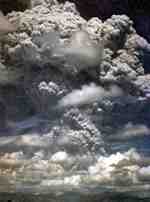
Mt. Pinatubo Eruption
Luzon, Phillipines
1991
-

Volcanic Phreatic Eruption
-

Spring Fresco West Wall
Swallows Scene
Akrotiri, Santorini (Thera), Greece
-

Volcanic Pyroclastic Surge
Montserat, Caribbean
1996
-
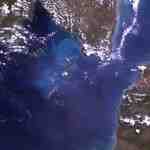
Krakatau
Sunda Strait, Indonesia
-
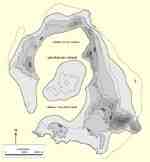
Pre-Eruption Minoan Thera
Santorini, Greece
-

Minoan Ladies in Blue Fresco
Knossos, Crete, Greece
-

Minoan Miniature Frieze
Admirals Flotilla Fresco
Shipping Scene Restoration
West House, Room 5, South Wall
Akrotiri, Santorini (Thera), Greece
-

Mt. Pinatubo Eruption
Luzon, Phillipines
1991
-
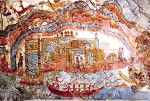
Minoan Miniature Frieze
Admirals Flotilla Fresco
Thera Scene
West House, Room 5, South Wall
Akrotiri, Santorini (Thera), Greece
-

Minoan Dolphins Restoration Fresco
Knossos, Crete, Greece
-
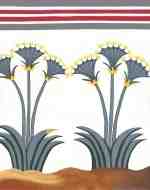
Minoan Sea Daffodils Lilies Restoration Fresco
Akrotiri, Santorini (Thera), Greece
-
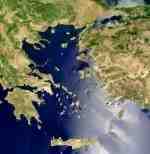
Aegean Sea
-
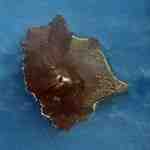
Anak Krakatau
Sunda Strait, Indonesia
-

Minoan Antelope Restoration Fresco
Akrotiri, Santorini (Thera), Greece
-

Anak Krakatau
Sunda Strait, Indonesia
-
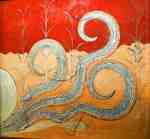
Minoan Octopus Fresco
Knossos, Crete, Greece
-
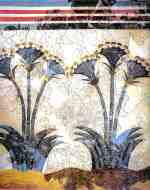
Minoan Sea Daffodils Lilies Fresco
Akrotiri, Santorini (Thera), Greece
-

Minoan Antelope Fresco
Akrotiri, Santorini (Thera), Greece
-

Minoan Dolphins Fresco
Knossos, Crete, Greece